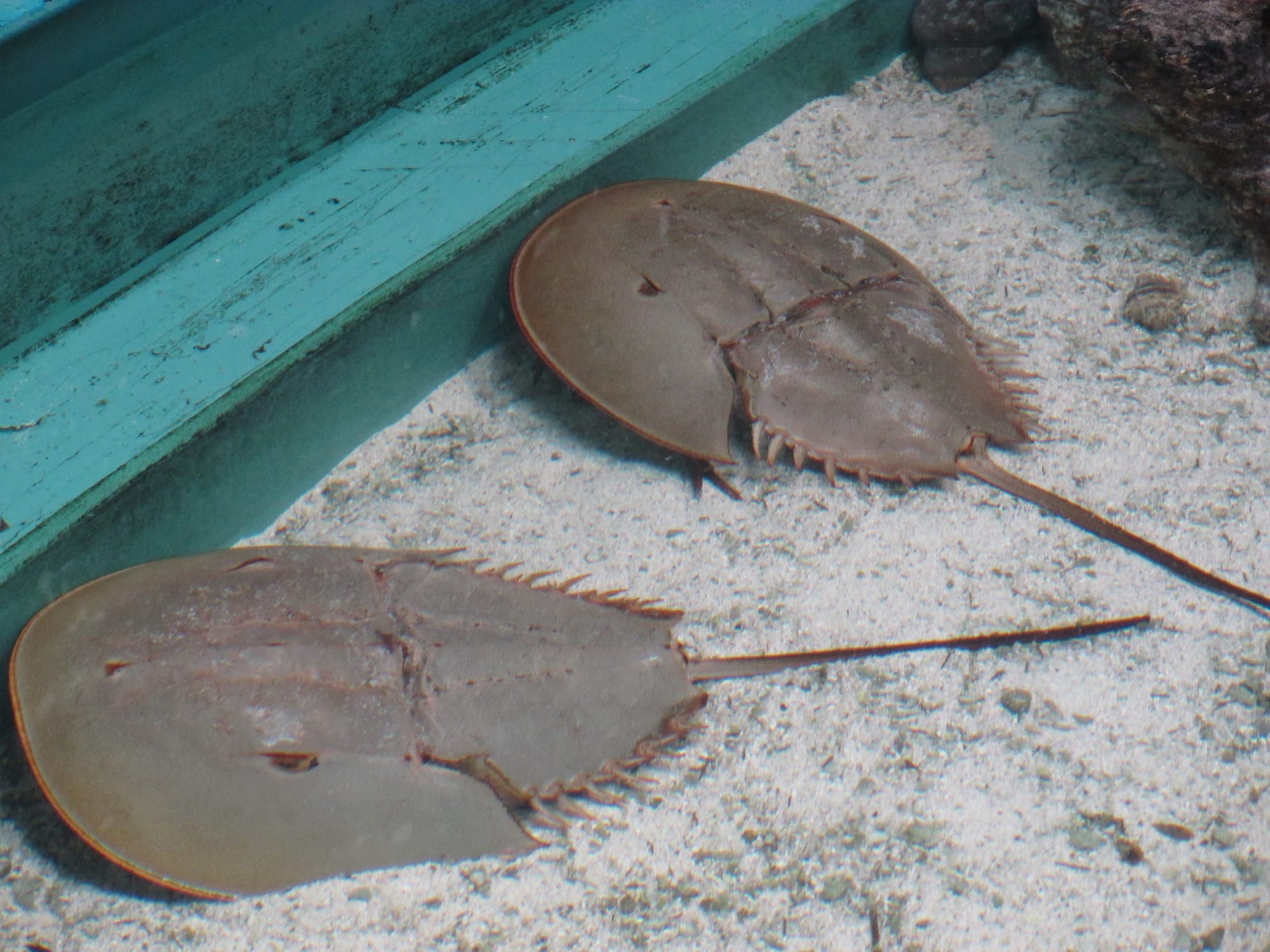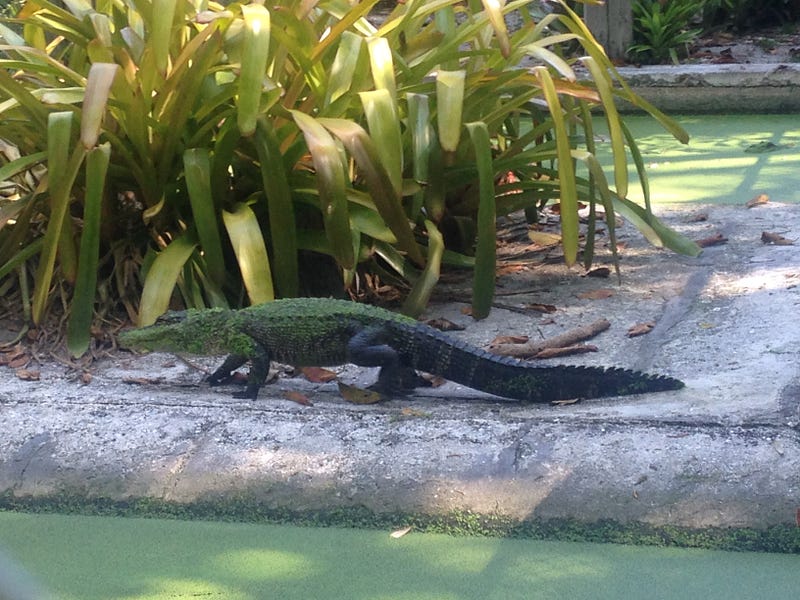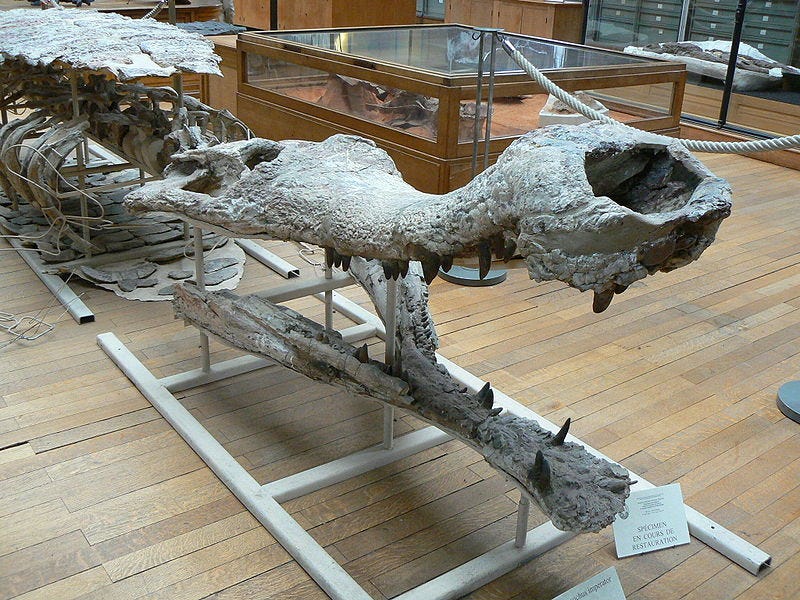
That title, ‘living fossil’, gets thrown around a bit when talking about certain organisms, like the pair above. But what do we mean when we say that? This is a pair of Atlantic horseshoe crabs, Limulus polyphemus, in the touch tank at the Conservancy of SW Florida (if you recall, that was also the temporary home of Betsy the sea turtle). Despite the name, they aren’t actually crabs, or crustaceans of any sort. Instead, they are more closely related to arachnids (spiders and scorpions), though that tail isn’t actually venomous.
One of the reasons why horseshoe crabs are so fascinating is because they closely resemble the form of their ancestors millions of years ago. This is one of the things that makes them a ‘living fossil’. The term is somewhat informal and generally refers to physical characteristics as opposed to genetic changes. Like many other ‘living fossils’ horseshoe crabs seem almost alien, like they belong to a different place or time. Their physiology, while almost unchanged over millions of years, seems bizarre to us.
Horseshoe crab blood does not contain the protein hemoglobin, used to carry oxygen in vertebrates. Instead it contains a completely different protein known as hemocyanin. The iron in hemoglobin causes vertebrate blood to turn red when exposed to air, but hemocyanin has no iron and instead has copper, which makes the blood appear blue instead. This protein is not unique to horseshoe crabs, but also found in mollusks (including snails, slugs, clams, and octopi).
In addition to the large compound eyes on either side, horseshoe crabs also have multiple simple eyes that are used as light sensors. They shed their exoskeletons as they grow. These sheds often then wind up on beaches and get mistaken for dead horseshoe crabs (if you see one, check for a split in the bottom front of the shell, which is where the individual emerges after the shedding process).

Of course, horseshoe crabs aren’t the only organisms that haven’t changed much in millions of years. Another classic example of a ‘living fossil’ are the crocodilians, including the American alligator, Alligator mississippiensis, pictured above. Crocodiles and alligators managed to survive the mass extinction event at the end of the Cretaceous (most well known for wiping out all of the non-avian dinosaurs, but which also eliminated approximately 75% of all living species at the time). The only major change since then has been in size. The largest living species is the saltwater crocodile, Crocodylus porosus, which can reach 20ft long for male individuals and weigh up to a ton. In contrast, the extinct Sarcosuchus imperator (aka ‘Super Croc’) could reach twice that length and weigh eight times as much.

Why do living fossils matter? Because they are windows to the past, ones that we can also study using more than just bones and fossil impressions. We can study their behavior and life cycle, and we have access to their actual tissue and not just what has been preserved after extinction. These organisms can help us better understand the changes that have occurred in other groups. Take a look outside your window. Look at whatever birds pass by. These are not living fossils in the strictest sense, but they are indeed dinosaurs, the evolutionary descendants of the smaller feathered species that survived the mass extinction when the rest of the dinosaurs perished. Watch one of my favorite groups of birds, the herons and egrets, as the stalk and hunt their prey and tell me you don’t see the resemblance.
Living fossils fascinate us because they provide a link to a time so far back that our minds have trouble even comprehending it, and that link is even stronger because of the obvious similarities still present in these species. It’s not just animals either. Ginkgo biloba, the ginkgo tree, remains physiologically similar to fossils dating back 270 million years. I suppose, living fossils are an example of the resilience of nature, which can be a comforting thought.
Life…finds a way.
— Ian Malcolm, Jurassic Park